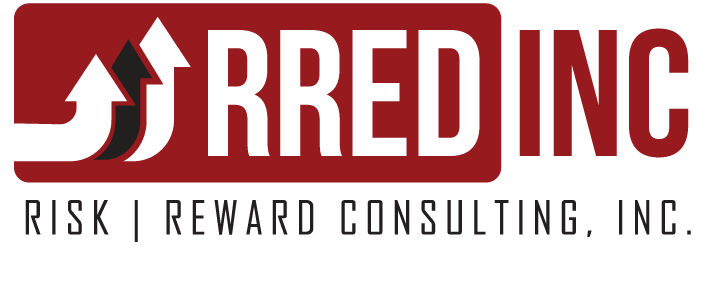
Ground Rules for Your Driver Recruiters
Previously we suggested some important factors that will lead motor carrier CEOs to better control of their high driver turnover problem. We offered some ideas to successfully manage the Electronic Logging Device mandate and how to avoid losing drivers that are fearful of the impact of this required technology.
Secondly, we suggested the need for motor carrier to CEOs adopt and buy-into real change – change in culture, operations, attitude of employees as well as drivers and shippers.
Finally, we developed the idea that it is time to retrain your current “recruiters” and train new ones to become much more capable of conducting more in depth recruiting, screening and onboarding procedures to qualified new drivers to your company.
Keep in mind that there are too many people “recruiting” that are not trained properly and often have other responsibilities. It is time to have at least one professional, well trained “recruiter” who may or may not also be the chief retention officer at the same time.
None of this is meant to sound easy to do. First is the commitment, then strategy and finally proper execution of new procedures, standards and policies. There are still many very qualified drivers. Many are looking to change companies. Still many more have lesser standards and the challenge is to attract the best of the best. Sound impossible? Let’s see.
Successful recruiting of drivers includes not only sourcing, interviewing and hiring candidates but also requires some new innovative procedures in the onboarding process. Forget everything you have leaned and do to onboard a new driver.
Let’s look at some big differences in new thinking.
Companies that take a new driver and take a couple of hours to a couple of days in “orientation” are both probably starting to lose that driver already with the first moments of contact. Your presenters don’t show any respect for your drivers when they show up late and keep drivers waiting that happens all too often.
Trucks that need inspection should have that requirement completed while the driver is busy with orientation not on the last day when the driver should be ready to leave with a load. Required paperwork should be completed early and not require drivers to hang around waiting for HR or safety of other department to complete paperwork with the drivers. Companies that require new drivers to show up one day and keep them for 2 or 3 or more days is just plain wrong.
Redesign your orientation plan, training and schedule so that the program only focuses on what is critically important that the driver(s) really needs to know from the time spent not driving?
Ask yourself: do they really need to spend several hours on Haz Mat, or drug testing, or load securement from orientation? Some would argue absolutely yes and some absolutely no! A well written test of driver knowledge can cut hours off of the initial training. A road test can save a lot of time, money, and potential roadside violations and claims for crashes and cargo damage
Let’s start with some fundamental changes in your orientation program that will tell the driver that the promises you made and expectations you created thus far in your communications with the driver are really different, truthful and will cause the driver to say “wow”.
Here are some new ground rules:
First, replace class room orientation training with a more robust interactive methodology that eliminates the driver sitting for hours or days. He has enough of that in the truck.
- Use props such as a real trailer to show how load securement in LTL or flatbed should be done.
- Use a tractor, even the drivers and go through a complete vehicle inspection, pre-trip, brake adjustment and other sources of mechanical failure and roadside violations.
- Use an ELD to train on your ELD Program.
- Think of props that you can use (Buy, Build or Create) to show and not talk to drivers; this is interactive training, and much more effective.
- Think of practical hands-on ways of teaching, training the topics that will help the drivers be safe, compliant, efficient, understand your systems and procedures.
- Take drivers to HR, settlement or payroll, safety departments rather than having these department people come to a classroom.
- Meet with the people at their desk that process trip packets, review POD’s, bills of lading, fuel advances, etc.
- This is more impactful in getting compliance than from boring classroom training
- Avoid lecture format as much as possible – include current drivers in teaching when possible. These are driver Ambassadors.
- Avoid PowerPoint at all costs.
- Avoid drivers sitting in front of videos.
- Invest in a desktop simulator of driving scenarios to “humble” drivers that think they are great.
- Have drivers go through “Decision Driver” training as a group.
- Role play with drivers about voiding road rage aggressive driver behavior.
- Conduct a Commentary Drive Assessment where drivers are actually driving with an instructor and giving a running commentary of what they are doing and seeing. This is a powerful training tool.
Working on these changes in your company activities will have a huge short-term and long-term impact on your driver satisfaction, productivity and profits. Begin to learn how to create an intelligent driver retention system.
In part VI of this series we will discuss the last two critical changes you can make in your driver recruiting and retention activities. Work all these changes into your company operations and you should yield at least a 15 to 20% reduction in driver turnover plus begin to be recognized as a great place to work and, consequently, attract new drivers, allowing you to grow your company.

The Foundation of a High Rate of Driver Retention
Who is creating your turnover problem? Is it you as CEO (or other senior executive)? Are you creating your own capacity shortage because of poor planning and not preventing driver defections?
What can you do to grow in 2017, make money while working through all these pressures and ensure that your driver retention results improve?
Unless you have a system that successfully attracts drivers, keeps drivers, and helps them in their work/life satisfaction and balance, you will continue to enjoy the revolving door that is draining profits from your bottom line.
No surprise here, but it is truly amazing that probably 95% of all motor carriers do what they have always done in recruiting, screening, interviewing, onboarding and ultimately not keeping 80% of their drivers over time.
Perhaps it is time to try something really different. Change the company culture.
The successful and very smart CEOs know that developing systems and procedures and a way of doing business that attracts and keep drivers, shippers, and key employees are the recipe to success. A well-known trucking company in central Illinois attributes their 30% turnover to the way they treat their drivers and, believe it or not, their faith-based culture.
It works for them.
Changes in culture such as how drivers are talked to, how problems are managed and how the important issues are handled, such as understanding why drivers leave or correctly managing expectations, are primary reasons why they say “yes” to a particular company that they will work for.
The ultimate impact on your company is a positive one – the improvement of driver retention.
There are 2 critical success factors that must be the foundation of a change in culture to support driver retention – without them, I can guarantee you will fail.
- It has to come from the top. There must be CEO buy in, a commitment to maintain an ongoing focus on the importance of the driver as your company’s greatest asset.
- Adopt a Drivers Are First mentality. This means a major change in attitude and behavior in your company culture so that drivers are treated with respect, honesty, truthfulness in dispatch, payroll (settlements), home time/time off, resolving problems they face with shippers/receivers and concern for their success.
Throughout this series, we will continue to discuss additional factors that influence your ability to have a driver retention program you can be proud of and, consequently, grow your business and your profits.

ELDs and Their Impact on Driver Retention
Are you content with your ability to keep drivers? Are you concerned that retention will worsen because of the mandate for electronic logging devices?
The clock is ticking for motor carriers that are delaying implementation of electronic logging devices. The fear for some is that this new mandated technology will hurt their business. Ultimately, constricted truck capacity will again upset the economy significantly in 2017.
What’s holding you back? Do you fear:
- Your drivers will leave to go elsewhere where ELD is not yet required? Most drivers that have begun to use the new technology are surprised about the value they receive from ‘running legal’ while yielding higher earnings.
- The cost involved to purchase and maintain the equipment and monthly service will be prohibitive? There are many ways to manage/offset the costs of purchase, training and monthly service costs.
- Productivity will be lost due to training staff and drivers to use the new technology? Just like adapting to hours of services rule changes, companies learn to accept new restrictions and limitations in operations and manage through them over time.
- You will experience inabilities to do business as you currently do, to get loads covered, picked-up and delivered legally according to DOT and shipper requirements? The anti-coercion statute, which protects against forcing drivers to violate hours of service law, will soon be in effect. This also meets the ELD hours of service enforcement requirement and will be mandated for all carriers, including your competition.
- Are you concerned about shippers cutting you off because use of ELD will not allow you to meet their pick-up and delivery schedules? Shippers will have to do a better job of scheduling pick-ups and loading and unloading times to accommodate driver’s hour’s mandates. They will have to adapt to change also.
Shippers and brokers will increasingly pull away from carriers that do not have ELDs in place. Similar to having proper insurance verification before expiration, shippers and brokers will not load you as the deadline date approaches.
Waiting until mid-year or late in 2017 is a terrible idea. The availability of computer tablets or other required hardware or installation capabilities may affect the cost, ability to deliver product and the time needed to train your people while depending upon the overworked support capabilities from the ELD vendors.
No surprise here. Why wait until the last minute?
The critical factor in all this will reflect on your already excessive driver turnover problems. Adopting ELDs can send the correct message to staff and drivers that you are a company that embraces (rather than being forced to) support regulations that protect your drivers. So what’s your strategy to implement ELDs and increase retention instead of losing more drivers at an even faster pace than you currently are experiencing?
If the majority of experts are correct in their predictions for the second half of 2017, the current atmosphere of overcapacity and falling rates will shift to a greater need for more drivers. This will be particularly troublesome as the effect of ELDs is felt as some drivers leave the business altogether while you may be continuing to contend with turnover issues
What can you do to grow in 2017, make money while working through all these pressures and ensure that your driver retention stats improve?
Part IV of this series will explore several ways you can accomplish the goals listed above.

In 1965, President Lyndon Johnson visited New Orleans within 24 hours after Hurricane Betsy.
“In the Ninth Ward, Johnson visited the George Washington Elementary School, on St. Claude Avenue, which was being used as a shelter…” the diary reads. “At first, they did not believe that it was actually the President.” Johnson entered the crowded shelter in near-total darkness; there were only a couple of flashlights to lead the way.”
“This is your President!” Johnson announced. “I’m here to help you!” Pensito Review, John Ponder 8/30/2007 and Edward F. Haas, Gulf Coast Historical Review
Imagine if presidents/CEOs of trucking companies were to shine a light on their company wherever their drivers may happen to be and shout out:
“This is your president (or CEO)! I am going to help you to get better pay, more home time, less waiting for pick-ups and deliveries, and guarantee that my staff and that of our shippers and receivers will forever BE NICE to you!”
Would that be powerful? Would it keep drivers from looking for a ‘better’ place to work?
As we noted in Part I of this series; if the president or CEO could make good on these promises – it just might.
If a president/CEO isn’t engaged in a manner of thinking that consistently improves operations and working conditions for the drivers, is out of touch and continuously focusing on tired, outdated practices, he/she will inevitably experience high turnover and mediocre performance in driver and customer service levels.
When excuses and habitual performance of standard routines and processes (tactics) dominate thinking and execution, that foregoes strategic thinking. Consequently, ownership of the outcome changes the game.
For the president/CEO to really make changes, it is essential to look at his business differently. What’s really going on and what questions should he be asking? What challenges are there to the answers that emerge? Is it necessary to look through a different lens to identify the core issues that need to be exposed?
Ask yourself: “how will your customers benefit when your drivers are best in class, perform better and retention is stabilized?” A recent conversation with the senior transportation executive of a large distribution company using 240 different carriers and moving 6,000 loads a week recently told us that low turnover translates into better service for the carrier’s customer. “We will not use a carrier with high turnover”, he said.
Look at the true cost (and loss) related to recruiting and retention in your company.
Consider the return on an investment in “retooling” your attitudes, processes, procedures and providing significant intensive training to change the way you do business that will result in lower driver turnover and significantly better overall performance and customer satisfaction.
Now take it a step further – how would an environment where qualified drivers seek out employment at your company change your priorities, expenses and stability?
Creating an intelligent driver recruiting and retention system at your company requires the ability to admit “it’s me, not them”. It requires strategic thinking that results from integrated reasoning that focuses on the big picture of a problem quickly and intensely. It avoids outdated ‘best practices’ thinking and replaces it with ‘next practices’ innovative thinking.
So how do you start? Three key elements should be at the forefront of this kind of system which will also provide results that create some “Ah ha” moments for the CEO and his leadership. They are:
- Conduct a driver turnover assessment. Take a closer look at your retention and recruiting strategies and why they are not working as well as they could be. Time to make hard choices!
- Assess all internal job functions and performance with all employees who come in contact with your drivers. See how your drivers are really treated, from their perspective
- Identify the preferred qualities of the best drivers for your company. What traits, skills, experience and attitudes are most desirable for your drivers?

Do you as a trucking company CEO honestly believe that there is a truck driver shortage, or just not enough drivers working for you?
Many truck drivers, or commercial vehicle operators as they are now being called by some motor carriers, don’t stay with one company for long. They leave and go elsewhere quicker than they can be replaced. They give new meaning to the phrase ‘the grass is always greener’.
But what if the drivers you have, and want to keep, don’t leave?
NO MORE SHORTAGE!
The revolving door of drivers coming and going is often caused by one simple but overwhelming factor: the attitude of the CEO and how it drives the company culture and guides the operations people, their mindset and how they treat drivers.
When the attitude isn’t driver-centric, it makes drivers unhappy, motivated to leave, and believe they can do better at yet another company.
A simple and absolute acceptance of this fact should occur between the trucking industry top executives and their leadership teams who run these motor carriers. Fix this problem and you will see the retention percentage begin to improve as long as the employers that these drivers work for adopt a Drivers Are Really Everything culture — and live by it.
What problem is being addressed? The driver shortage or the turnover (lack of retention) which causes a shortage at your company. Are drivers really everything at your company, or just a piece of the revenue generating program?
All of the conversations about driver pay, lack of respect, not enough home time, and on and on are all a direct result of the value placed on drivers by the CEO. This attitude, be it positive or less than desirable, flows through not only the organization, but also affects how the drivers are treated by everyone in the supply chain that they come in contact with.
Survey results that describe the characteristics of great drivers and what drivers like and don’t like and why they stay or leave are fine; it’s a start. However, the winners of this game will provide an environment, a philosophy, a way of doing business that exceeds typical best practices by adopting new ways of doing business with the shipper/consignee/driver /dispatch/payroll-settlement/safety employees and the drivers.
Predictive assessment tools are used by some companies to test for a prospective driver’s attitude, a measure of integrity, intelligence and skills. Results that might correlate into a driver being safety minded and just an all-in-all great driver won’t make-up for a bad culture or for a work environment that isn’t what these great drivers need to be happy and successful.
FACT. The “great places” to work, according to surveys conducted regularly by Forbes, Fortune, U.S. News, Glassdoor, Crain’s and others, reveal criteria that ranks job satisfaction with a focus on work environment, working conditions, trust of leadership, culture, and work life balance.
Drivers, like most everyone else, seek to work with great people in a trusted comfortable, environment – the equivalent of Drivers Are Really Everything(DARE) philosophy.
How many trucking companies will pass the test when the recruiter tells prospective drivers about the great place their company is to work for, but that their driver turnover is significantly less than the industry standard of 80 or 90%? Really?
True or not true? Drivers want to know the real issues about a company and avoid being told the good stuff that make the drivers feel good but are seldom delivered in treatment, home time, compensation, fair dispatching without favoritism and on and on.
Again, drivers leave because they are not happy. Why? They go to work at companies where they believe they will be happy and all their concerns will be dealt with properly and fully. But the “truth in recruiting” presentation has to pass the “so what” test. Facts, not promises. Truth, not mismatched expectations which only reveal themselves after the driver signs on and goes through orientation or handles the first load. Then reality sets in and promises made and not kept make drivers unhappy.
Why do some companies enjoy very low turnover? An example is a small regional carrier in Illinois with 33 drivers (50/50 employees/owner operators) which has lost only one driver this year. They don’t recruit because they don’t have to – it’s a nice place to work. Ownership is involved! They talk to their drivers every day and they make sure that the drivers:
- Know how important they are to the organization
- Are treated well by the other employees, their customers and receivers
They do not tolerate any abuse or lack of respect or any issues that the drivers will stew about while alone in the truck or at the truck stop talking to other drivers.
Why do most private fleets and some carriers with dedicated operations enjoy turnover in the 15-30% range? Because they do the right things to keep drivers happy.
If your company is struggling with retention (and therefore recruiting), and you are serious about solving this issue for good, start with these three steps:
- As CEO of your company, you should also be the force behind continuous improvement of the culture of the company including staying in tune with your drivers’ experiences to learn how to create and maintain a great working environment.
- Train everyone that comes into contact with drivers to be respectful. In other words, BE NICE!
- Become more innovative in your business practices by exceeding the best practices of other carriers to give you a real competitive advantage over other carriers in order to attract more and better quality drivers.
The really great companies that enjoy very low driver turnover realize that creativity, innovation and very different levels of thinking and execution are necessary to make a real transformation. They become the standard by which all other carriers are measured.
How does your company measure up to being a “great place” to work? What kind of treatment of drivers do you practice? What innovative strategies are you using to really make a difference in attracting and keeping drivers?
How do you know your company is a great place to work? Because you as CEO think it is?
Ask your customers what your drivers say about your company!
If you want to create an Intelligent Driver Retention SystemSM and are willing to rethink your driver retention practices take the Driver Turnover Assessment. I can tell you in five minutes why you lose drivers consistently. Connect with me on LinkedIn or email me at norris@rredinc.com for your free copy.

Commercial Carrier Journal recently published an article (July 6, 2016, James Jaillett) that truck driver turnover frequency has “tumbled” as freight volumes have weakened in 2016.
We certainly are glad to see that fewer drivers are leaving their motor carrier positions. However, this is the wrong reason for this trend to be in the right direction — freight is down and the idle drivers have nowhere else to go.
As history repeats itself, this is not the first or the last time freight rates and volumes will be low causing drivers to leave the industry, and/or your company. Too many are on the sidelines causing a driver ‘surplus’.
Naturally this will leave you with a significant capacity shortage problem when shippers begin to have greater needs as the economy improves. As you try to draw back available drivers they will have the edge on demands for their benefits, rates, working conditions and overall attitude.
Anyone else see the red flag waving?
So back to the temporary ‘surplus’ of drivers. Someday soon, the imaginary switch will flip and freight volumes will increase almost overnight without warning — and the driver turnover/retention crisis will become real again. Motor carriers will scramble to get enough drivers to handle the increase in loads.
Ah, but I have a strategy to recommend to you to manage the problem for great results. There are very few motor carriers that keep their drivers and have turnover in the 20-30% range. Why?
It’s very simple to understand, but for most motor carriers very hard to accept and to execute. The Answer: Create an intelligent driver retention system now. Coincidentally, that’s the title of my new book just published.
While you have time to work with your operations, safety, recruiting and other key employees that come in contact with drivers, now is the time to give attention strengthening your driver pool.
Enter the DRIVERS ARE FIRST culture that you will need to have in place to attract and keep drivers. Stabilize your organization’s greatest asset and create an advantage over the competition well before shipper demand significantly increases.
With an abundance of trucks and loyal drivers, your available capacity not only strengthens your relationships with your existing customers, you become a destination carrier for new customers looking for reliable capacity when others don’t have the infrastructure to keep up with demand.
When the CEO of a motor carrier company decides enough is enough with the revolving door of driver turnover, then he and his team (described above) should roll up their sleeves, be honest with what needs to change and get ready to adopt a “next practices” strategy that will attract drivers for reasons other than sign-on bonuses, loyalty rewards or other temporary relief programs.
For all motor carrier owners, CEOs, COOs and their management teams, the key is to wake up and stop doing what you have always done and expect different results.
It’s time for straight talk on a tough topic. It’s time to learn how to adopt a new framework of culture change to shake things up.
Less than 5% of motor carriers will do anything to make real change. Do you want to be one of them?
Motor carrier executives: If you would like a complimentary copy of my book: How to Create an Intelligent Driver Retention System (limited number available) or are interested in learning more about a training and certification program that helps key personnel of motor carrier companies put the concepts of this book into practice, resulting in an executed recruiting and retention system that not only works, but lasts, email me at norris@rredinc.com or connect with me on LinkedIn.

People, especially business leaders, who obsess over goals or demonstrate obsessive behaviors need to avoid making choices that reject good sense – even if they drive great results. Obsessive thinking and behavior can be a good thing in personal life and in business if managed correctly. However, when they drive people away and/or create a culture steeped in “my way or the highway” thinking, that will kill motivation, enthusiasm and any great results achieved will be only short term.
It appears that business leaders around the world are finally getting the message — they can no longer continue with their obsession over short-term profits growth at the expense of a healthy society. (Survey by Price Waterhouse of 1400 chief executives – Huffington Post by Jo Confino 1/20/2016).
As outlined in an article appearing in Business Insider, the CEO of one of the largest fast food chains had a misguided obsession with a competitor that could drive his business into the ground. He is targeting any customer by stealing market share from the competition and other chains instead of focusing on his core customer base. Thus, the business suffered financial losses for several years. The new CEO of a major internet search engine provider is described as “absurd in her obsession with details”. The co-founder of another search engine provider is described as “obsessed with efficiency and possessing tunnel vision”.
In each of these instances described above, the CEOs ultimately were successful in varying degrees by turning their companies in the right direction and getting back to profitability but at what price with their stakeholders, customers, employees, Wall Street and the court of public opinion?
What do top logistics companies have in common? “Shrewd and experienced management teams and an obsession with service and operational details.” (Logistics Management, John D. Schultz, April, 2011)
This obsessive behavior makes total sense when it provides high levels of customer satisfaction and expectations. Making the right choices and imposing high standards in transportation and logistics companies’ operations may be obsessive, but stakeholders understand and support the results. It doesn’t work when obsession without reason or following good business principles dominates the CEO’s thinking
Are you obsessive? Are you managing your passions correctly or are you obsessed with whatever is important to you at the expense of good results, respecting your workforce or being a good leader?
If you know you have an obsessive desire to achieve specific outcomes and recognize that you need to tone it down, then maybe change is possible and necessary.
Want to change? Consider whether these statements apply to you:
- There are some things that I can’t let go of or delegate
- I am reluctant to change even when given a reason to do so
- I am hard driving and very detailed oriented
- I am firm in my position when dealing with others
- As a leader, I impose my personality on others
A good example is the small trucking company owner in the Midwest who was obsessed with buying a piece of land and building his own truck terminal rather than continuing to rent. Economically it probably made sense, however, the company was struggling to become profitable. The CEO’s banker discouraged the project, preferring to postpone it for a year or two. Then came the economic meltdown of 2007 and the business came very close to collapsing. It was essentially bankrupt but the owner refused to back off his fixation on the building that had to be built.
The banker terminated his business relationship for fear of the company closing; the owner refused to stop the project and had to resort to some very expensive sources of capital to keep afloat. It took 5 years, enormous anxiety and stress to get right side up financially. This was obsession on steroids.
How can an obsession be useful without overwhelming positive behaviors while still allowing for a success path?
Learn to manage your obsessions and passions – be confident, but don’t be a narcissist—self-centered (instead of success-centered), singularly focused, inflexible and reckless. Leaders who are humble and who focus on others are more successful and capture the cooperation and passion of their subordinates.
Stop believing that you are “special” and no one else can do what needs to be done.
- Take criticism well and do not be offended or supersensitive to constructive comments about your behaviors, passion or unwillingness to compromise
- Have empathy for others and their points of view
- Control your feelings of brilliance, power and unlimited success at the expense of alienating others around you
- Refrain from soliciting and requiring others to admire you
Managing Your Obsessions for Better Interpersonal Relationships and Results
Being obsessive can have advantages if controlled and if you truly care about results and those that help you achieve them.
Discard your obsessions in place of maintaining a passion for what you believe in and who you are –but make it work for you and not against others.
- Make a great first, but lasting impression and make it real; don’t disguise your obsessive personality only to have it surface later
- Give credit to others and take blame when appropriate
- Be nice! Project integrity, honesty and competence
Consider that in business even achievement can become—in and of itself—an obsession. You can be obsessed for the right reason and right outcome. But when it is blind obsession, it will lead you to negative outcomes. The true test of an obsession that won’t result in a positive outcome is the notion that you can’t argue with an obsession—it’s there and will appear nonnegotiable.
Things to Think About
- Lesson #1: Don’t confuse efforts with results. Obsession doesn’t always rule.
- Lesson #2: Look at the reason for your motivation, decisions or actions and question them. Don’t move ahead for the wrong reasons and don’t rationalize your decisions based on illogical thinking.
- Lesson # 3: Let others you trust become part of your thought process and goal setting –make it a team effort.
Do you consider yourself a great leader of people and a good CEO of your business, your department, your job? Take the Self-Scoring Seven Habits Profile Quiz and find out.
For more information and a free sample of the Profile Quiz, contact me atnorris@rredinc.com or on LinkedIn at http://www.linkedin.com/in.norrisberen

In Part 1 of this article, the importance of an “I Appreciate You” program was discussed. The impact of such a program on the culture of a company and, consequently, on its employees cannot be understated.
Employee recognition can take place in one or two ways or both:
- First, pay attention and look for opportunities when spur-of-the-moment, oral or written recognition is appropriate and will help excite and motivate the employee receiving your attention — and show all others that this is now part of the company culture.
- Next, make something happen. Follow-up an oral praise moment with a written memo such as the sample below.
Here is an example of how easy a simple message can be:

What does it cost to have a company-wide employee recognition program?
Virtually nothing! The sample above can be printed in tear-off pads of paper for very small cost. Giving these to key employees with a few instructions is all that is needed to begin to make a huge difference in reducing your retention turnover problem:
See or hear something special about an employee or independent driver?
- Use one of these “I Appreciate” forms and write a special message and hand it to the recipient, whenever possible, or include in paycheck or settlement envelope.
- Do not send by mail.
- Write no more than three sentences.
- Sign and date.
- No limit to who gets them.
There is a residual cost, however, and it is the issue that may be uncovered by the conversations between the employee and the manager or executive giving the praise could require some actions or changes in a company that could be significant. In any case, the benefits of such a program are large when implemented effectively.
Benefits
- Your company may experience increased individual productivity – greater employee satisfaction and enjoyment of work – more time spent focusing on the job and less time complaining.
- Happy employees are more loyal, satisfied and supportive of the company.
- Happy employees tend to satisfy customers more than minimum standards require.
- The big one: Retention of happy employees increases which reduces employee turnover.
- Companies with happy employees experience better safety records and fewer accidents on the job than companies with little communications with employees on their issues.
- Happy employees show up for work more often and experience less stress than unhappy employees.
Costs
There are costs to design and execution – but they are so minimal compared to the benefits.
- Developing a program to train key employees to become the administrators of the “I Appreciate You” program
- Time taken to give recognition
- Dollar cost of the recognition items given
- Time and cost of teaching people how to give recognition
- Costs of introducing a new process
You can spontaneously praise people – this is highly effective. For many employees, receiving sincere recognition and thanks for their effort far outweighs giving something physical such as a gift card or promo item (hat, pen, shirt, etc.).
Your employees will enjoy recognition through written praise from those they respect at work, praise given in a timely, specific and sincere way.
I have seen employees who have received more than one of these “I Appreciate You” acknowledgments hang them up in their work area for all to see. They are proud, loyal, happy and “keepers”.
The best format for showing your appreciation to an individual for their efforts is:
- Thank them by name. “I appreciate you, Bob…” (Mary, Suzy, Mohamed)
- Be specific about what your appreciation is for: “for taking the time to make that delivery despite the difficulty you experienced…”
- Recognizing a specific reason for your recognition reinforces good behavior and shows others what is valued at the company and that it goes for everyone.
- Let employees know that what “Bob did” helps the company in many ways. “…your efforts, Bob, go a long way to showing our customers how much we value their business…”
- Point out the value added to the team or organization by the behavior.
- Thank the person again by name for their contribution.
The Recognition Process

We are a better company for the ability to have happy employees. Happy employees are likely to stay longer and that helps our retention thus reducing our costs to replace people.
Using praise and recognition through a simple and inexpensive method like the “I Appreciate You” memo goes a long way to establish a positive culture where ownership and management respect their employees and show them how much they are valued.
Employees who are shown respect, appreciation and recognition make a company great for their support of mission, customer relations and helping yield a better bottom line. Ultimately, it helps everyone benefit.
The cost of a program of appreciation is small compared to the ROI benefits.
…and I appreciate you for reading this article.
—
I would appreciate your comments on my recommendations and/or how well this program is working or will work in your company if adopted.

Job satisfaction is not always and only about money. In fact, survey after survey of employee satisfaction shows that money is normally number 3 in the hierarchy of what people value from their jobs, their company and their career.
More often than not, the number 1 factor expressed is “I want to be appreciated and recognized for my job performance”.
The Boston Consulting Group recently surveyed over 200,000 people around the world and found that the #1 factor for employee happiness on the job is to get appreciated for their work. (Forbes Dec 15, 2014, Jacob Morgan)
Create an “I Appreciate You” culture.
Employees and, in the specific case of the trucking industry, their company drivers and their independent contractor drivers/owners, too often leave a company for a variety of reasons. If those reasons can be summarized simply — they just are no longer happy being at their present motor carrier.
When a corporate executive or manager takes the time to praise, recognize and acknowledge their people individually, it changes the game and will open the door for a conversation that needs to happen to ensure that the employees are happy.
When they are happy, they probably will stay. If they are not, then you will know and will have an opportunity to at least surface unhapppiness and perhaps provide an atmosphere where being heard can be a solution even though a specific problem cannot be addressed adequately, if at all.
More often than not, truck drivers, whether employees or independent contractors, would welcome the opportuiity to let their company executives know how they feel about matters that affect them. In most cases, they know that to do so is risky because it would be received as a bad attitude, non-constructive criticism or just complaining Drivers need to have an opportunity to be open about the company, people, customers or even vendors.
Drivers too often leave over misunderstandings or minor issues that if addressed might improve the driver experience for the whole company and be a major source of driver retention instead of defection.
What if ownership and management could benefit from anonymous but useful and truthful information about the company that prevents drivers from being happy?
What if drivers could self-rate their satisfaction with the job, the people, the customers and the company? This could lead to preventing small or large issues from being ignored — those issues could be addressed routinely by messaging drivers, especially if a pattern or theme develops that might require a review and action steps to be taken by the company.
This does not mean that every issue has to result in the company taking actions to just satisfy the drivers. However, recognition and acknowledgment of the company’s position would go a long way to helping drivers understand why things are done the way they are.
Praise and employee appreciation are critical elements of a great workplace. You as owner, executive or manager want to be respected and valued for your contributions and so do the people you work with.
An “I appreciate you” culture should include everyone.
An “I appreciate you” culture should include everyone. It’s not just about executives, managers and supervisors showing appreciation to subordinates. It’s about subordinates showing appreciation to their supervisors, managers and executives too. It’s about co-workers showing appreciation for one another. While it is important that the program start from the top down, it also needs to be instituted from the bottom up and across the entire organization. People appreciate a simple thank you no matter who it comes from.
Stay tuned for Part II of this article which will include detailed information on how to have a successful “I Appreciate You” program.

